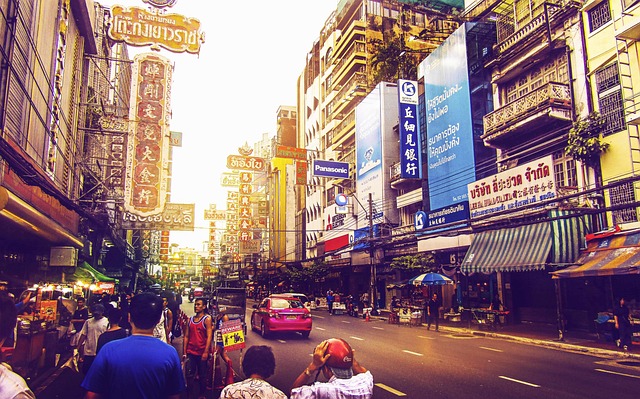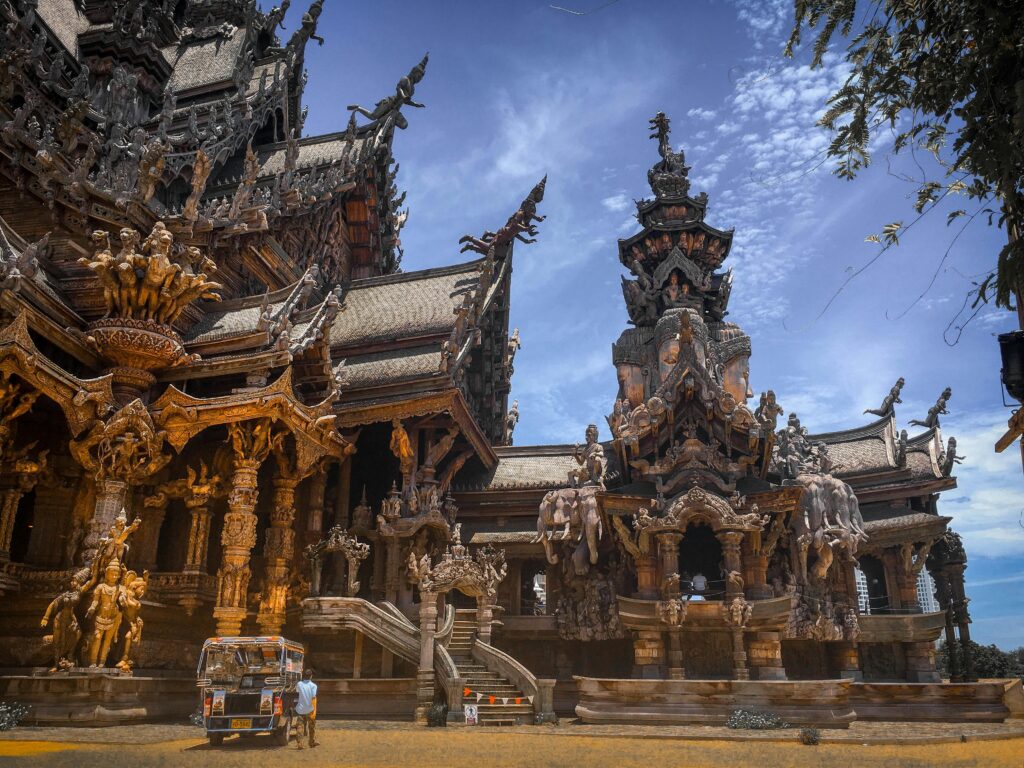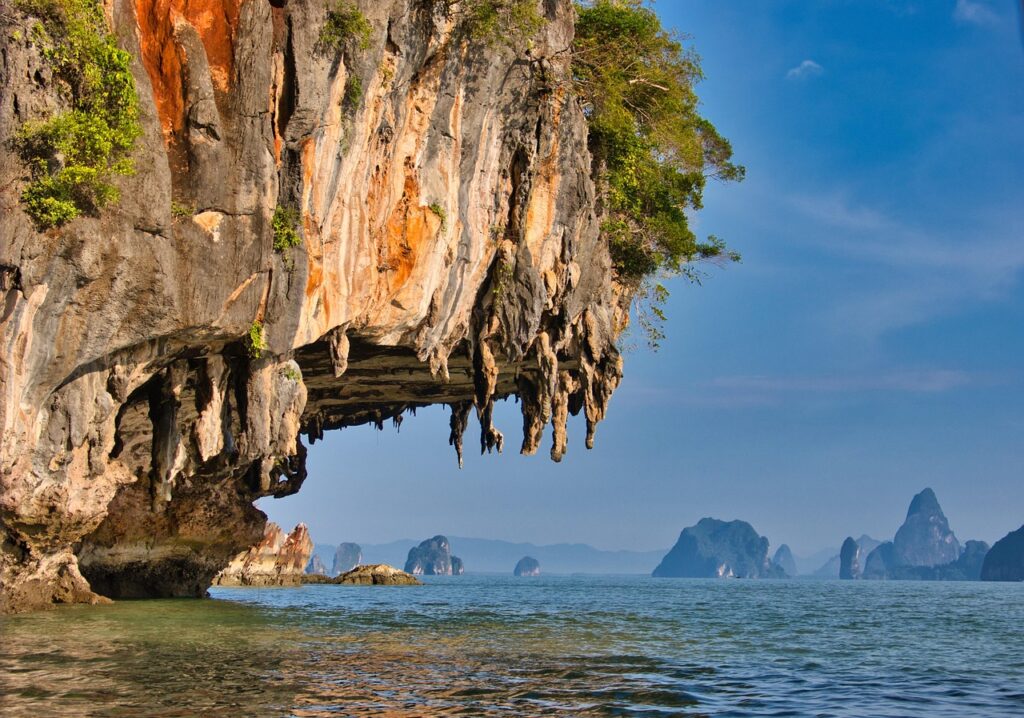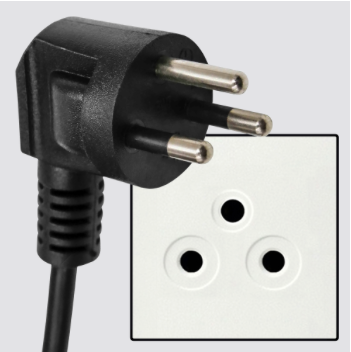Thailand / ราชอาณาจักรไทย – Let’s explore here

What’s it like in Thailand?
Thailand is a stunningly beautiful country in south east Asia. The north is dominated by mountains, with various plains and deltas covering the rest of the country. The highest point is Doi Inthanon, at 8,415 ft (2,565 m) above sea level.
It has a very long, rich and troubled history. Thailand is the only southeast Asian state never to have been colonised by a Western power. Its neighbours include Myanmar, Laos and Cambodia.
The population of Thailand is 66 million people (2024), about ¼ of whom live in the metropolitan area of Bangkok. Thailand’s population is mostly rural, being concentrated in the rice growing areas. Thailand has an aged society, with one in five of the population being above 60 years of age.

A bit about the history of Thailand
Early History
Thailand’s history dates back thousands of years, with the region being home to various indigenous groups and early kingdoms. The area that is now Thailand was influenced by Indian culture, particularly through the spread of Hinduism and Buddhism. Early kingdoms like Srivijaya and Khmer dominated parts of the region before the rise of Thai-speaking people.
Sukhothai Kingdom
The first unified Thai kingdom was Sukhothai, established in the 13th century. It is considered the cradle of Thai civilisation and saw the development of the Thai script, the spread of Theravada Buddhism, and the formation of Thai political institutions. The kingdom eventually fell due to external pressures from neighbouring states and internal divisions.
Ayutthaya Kingdom
The Ayutthaya Kingdom succeeded Sukhothai, becoming a powerful and prosperous state. It flourished through trade, diplomacy and military strength, with Ayutthaya becoming one of the most important cities in south east Asia. The kingdom faced numerous conflicts with Burma, and in 1767, it was destroyed by Burmese invaders, signaling the end of its era.
Thonburi and Rattanakosin Kingdoms
After the fall of Ayutthaya, King Taksin established the Kingdom of Thonburi. However, this was soon replaced by the Rattanakosin Kingdom, which began with the founding of Bangkok as the capital in 1782 by King Rama I. The Rattanakosin era saw modernisation efforts and territorial expansion. The kingdom remained stable under the Chakri dynasty, which continues to rule today.
Colonial Influence and Modernization
During the 19th century, Thailand was one of the few south east Asian countries to avoid colonisation. Kings like King Mongkut (Rama IV) and King Chulalongkorn (Rama V) enacted significant reforms to modernise the country, including the establishment of a centralised administration, modern infrastructure, and the adoption of Western technologies and education.
The Transition to a Constitutional Monarchy
In 1932, a bloodless coup led by military officers and civilians transformed Thailand from an absolute monarchy into a constitutional monarchy. The country underwent several political and economic changes, and the military began to play a central role in governance.
World War II and Aftermath
During World War II, Thailand initially aligned with Japan, but after the war, it shifted to align with the United States and became part of the anti-communist bloc in south east Asia. This period also saw significant internal political instability, with frequent changes of government and military coups.
The 20th Century and Modern Political History
In the late 20th century, Thailand experienced political upheaval, with military coups in 1947, 1958, and 1976, as well as periods of military rule and civilian governance. In the 1990s, Thailand moved toward a more democratic system with elections and civilian governments, though political instability continued. This period was marked by tensions between pro-democracy factions and the military, culminating in periodic protests and military interventions.
Recent Developments
In the 21st century, Thailand has experienced political instability with ongoing protests, military coups, and public demands for democratic reforms. The monarchy remains a symbol of national unity, though its role in politics remains a topic of debate. Thailand also faces challenges related to economic inequality, political corruption and a rapidly changing society.

Thailand road trip
Map of Thailand

We haven’t finished our planning for you road trip through Thailand yet. When we do though, we’ll post it here, and in the blog.
Hopefully our journey will improve our knowledge of this intriguing and beautiful country, and enable us to meet some interesting people. We’ll be updating this page at that time – don’t forget to check back 🙂
What’s it like to drive in Thailand?
They drive on the left hand side of the road in Thailand. In the main, roads are quite poor, with many being unsurfaced dirt tracks. Driving standards are also quite poor.
Do you require an international driving permit in Thailand?
We’ve created a dedicated page to driving abroad, which answers this question, and more, which you might find helpful.
Can you use your UK driving license when driving through Thailand?
We’ve created a dedicated page to driving abroad, which answers this question, and more, which you might find helpful.
Do I need a carnet de passages to drive in Thailand?
We’ve created a dedicated page to driving abroad, which answers this question, and more, which you might find helpful.
What currency do they use in Thailand?
In Thailand they use the Thai Baht. Cash is widely used. The use of credit / debit cards is widely accepted. Travellers cheques are also readily accepted in cities. There are many ATMs in cities and towns throughout the country.
You should make yourself aware of the amount that your bank charges you for using credit and debit cards abroad. Often credit cards are cheaper for purchasing items directly, and for withdrawing cash from ATMs.
What language do they speak in Thailand?
They speak Thai in Thailand. English is also widely spoken in tourist areas and in many cities.
What time zone is Thailand in?
Remember, when you’re planning your next trip to take a look at what time zone it’s in.
Do I need a visa to visit Thailand?
We’ve created a dedicated, more comprehensive page on visas, which you should find helpful. Check it out!
Is wild camping legal in Thailand?
Yes, wild camping is fine in Thailand.
What plug / socket type do they use in Thailand?
In Thailand they use plug / socket types A, B, C, F and O.





Health issues in Thailand
Is it safe to drink water in Thailand?
No, it is not safe to drink tap water in Thailand. Bottled water is readily available throughout the country.
What vaccinations are required for Thailand?
This NHS website is kept up to date with all relevant information on vaccinations in Thailand.
Phones in Thailand
What is the country calling code for Thailand?
The country calling code for Thailand is +66
What are the emergency phone numbers in Thailand?
- The emergency number for police in Thailand is: 191 / 112
- In Thailand, the emergency number for ambulance is: 1669 / 112
- The emergency number for fire in Thailand is: 199 / 112
If you’ve got some useful info that you’d like to share, let us know!
And don’t forget to check out all the other pictures!
